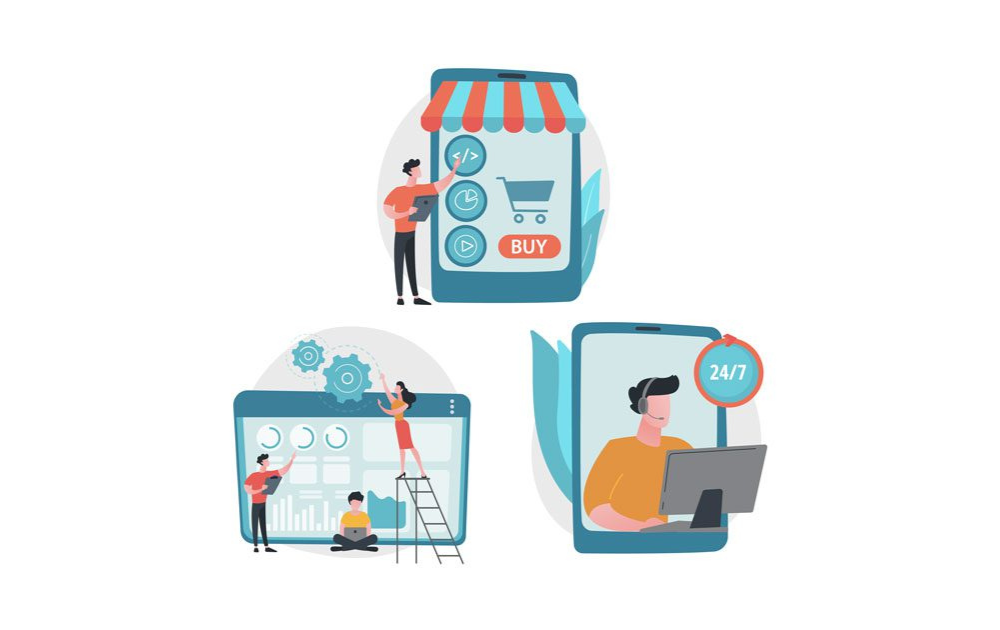Retailers have long felt the strain of a shrinking labor market, but recent economic shifts have only amplified the challenge. While consumer demand continues to grow, finding and retaining workers remains a top concern. According to the National Retail Federation, labor shortages persist as one of the biggest hurdles in the industry, with many retailers struggling to maintain adequate staffing levels.
At the same time, labor costs have surged, with the U.S. Labor Department reporting one of the most significant year-over-year increases in decades. Wages are rising, but so are employee expectations—flexibility, better benefits, and more meaningful work are now table stakes.
To adapt, retailers are leaning into technology not just as a stopgap but as a strategic investment. From AI-powered customer interactions to cloud-based workforce solutions, modern tools are helping retailers fill labor gaps, support existing teams, and make jobs more appealing to today’s workforce.
Technology as a Solution to Labor Challenges
Retailers aren’t just searching for more employees—they’re searching for better ways to work. The right technology can help reduce reliance on human labor, enhance productivity, and create an environment that attracts and retains top talent. Here’s how:
1. Reducing the Strain on In-Store and Customer Service Teams
As labor shortages persist, many retailers are leveraging technology to minimize the need for additional staff while maintaining high-quality customer service.
- E-commerce and self-service capabilities: Consumers increasingly prefer digital shopping experiences. By investing in seamless online stores, intuitive self-service portals, and automated order tracking, retailers can provide top-tier service without additional staffing.
- AI-powered chatbots: Chatbots handle common customer inquiries, such as order status and return policies, freeing up human agents for more complex requests. Advanced AI can even assist with product recommendations and troubleshooting.
- Virtual assistants: AI-driven assistants help customers navigate online stores, offer personalized promotions, and guide them through the purchase process—reducing dependency on live agents.
2. Augmenting and Empowering Existing Teams
Instead of replacing human workers, today’s technology is designed to enhance their efficiency. Cloud-based contact centers offer retailers a way to maximize output while maintaining a manageable workload for their employees.
- Omnichannel communication: Customers expect to engage with brands across multiple channels, from phone and email to social media and web chat. A cloud-based contact center consolidates these channels, enabling agents to manage them all from a single platform—without requiring additional staff for each one.
- CRM integrations: When customer interactions are seamlessly linked to purchase history, past inquiries, and preferences, agents can work more efficiently. Personalized interactions also mean faster resolutions, shorter call times, and better customer satisfaction.
- AI-driven agent support: Tools like scripted workflows and intelligent response suggestions help agents resolve issues faster while reducing training time for new hires. These systems provide real-time assistance, ensuring even less experienced agents can deliver expert-level support.
- Workforce analytics: Cloud contact centers provide real-time analytics, helping retailers optimize staffing based on demand patterns. By predicting peak times and adjusting schedules accordingly, retailers can avoid overstaffing or understaffing—keeping labor costs in check while meeting customer expectations.
3. Attracting and Retaining Talent in a Competitive Market
Retailers aren’t just competing for customers—they’re also competing for employees. The ability to offer flexible, tech-driven work environments can make all the difference in attracting top talent.
- Remote work opportunities: Cloud-based solutions allow retailers to expand their hiring pool beyond geographic limitations. By offering remote customer service roles, retailers can tap into skilled workers in more affordable markets or those seeking flexible work-from-home arrangements.
- Flexible scheduling: Modern workforce management tools make it easier to offer shifts that accommodate employees’ personal lives—whether that means part-time roles, split shifts, or alternative work hours. This flexibility improves job satisfaction, reducing turnover rates and recruitment costs.
- AI-assisted training and career development: Today’s workers value opportunities for growth. AI-driven coaching platforms provide real-time feedback, helping employees upskill while on the job. Retailers that invest in career development see higher employee retention and engagement.
Retailers Are Turning to Contact Center Solutions to Do More with Less
The combination of rising labor costs and persistent staffing shortages is pushing retailers to rethink their workforce strategies. Investing in the right technology isn’t just about cutting costs—it’s about creating a more efficient, scalable, and resilient operation.
Cloud-based contact centers, AI-powered customer service tools, and flexible workforce solutions are helping retailers bridge the labor gap while improving efficiency and customer satisfaction.
Looking to future-proof your retail operations? Learn how Broadvoice can help streamline communication, enhance customer service, and empower your workforce with cutting-edge contact center solutions.










